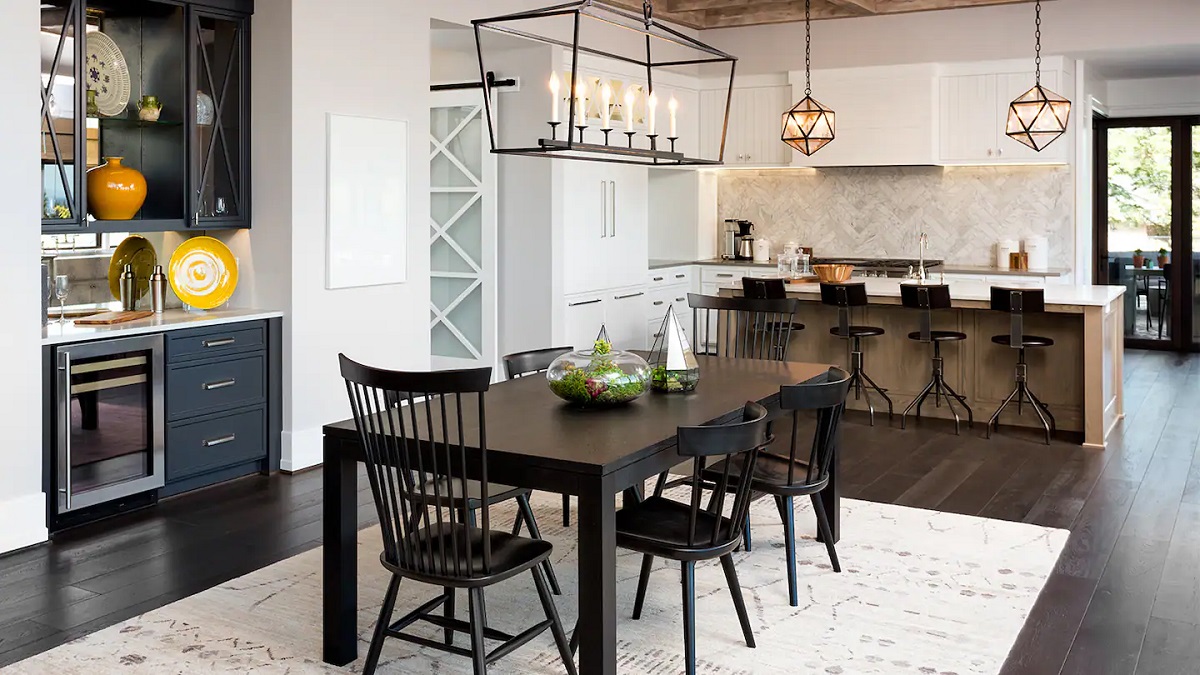

Tableware
What Size Rug To Get For Dining Room?
Modified: January 3, 2024
Discover the perfect rug size for your dining room. Enhance your tableware and create a stylish space with our expert tips on choosing the right rug size.
(Many of the links in this article redirect to a specific reviewed product. Your purchase of these products through affiliate links helps to generate commission for Storables.com, at no extra cost. Learn more)
Introduction
Welcome to our guide on determining the ideal rug size for your dining room! Choosing the right size rug can dramatically enhance the look and feel of your dining space, providing both comfort and style. Whether you have a rectangular, square, or round dining table, we will help you understand the key factors to consider when selecting a rug size.
Not only does a properly sized rug add visual appeal, but it also serves practical purposes. It helps protect your floors from scratches and damage caused by moving chairs and provides a soft and cozy surface underfoot. Additionally, a strategically placed rug can define the dining area within an open floor plan, creating a sense of warmth and intimacy.
Before we dive into specific rug size guidelines, it’s important to take a few factors into consideration. The size of your dining room, the dimensions of your table, and the overall design aesthetic you want to achieve will all play a role in determining the perfect rug size.
Now, let’s explore the rug size guidelines for different types of dining tables to ensure you have a clear understanding of the options available to you.
Key Takeaways:
- Choose the right rug size for your dining room by considering factors like table shape, room size, and chair placement. Proper placement is key to creating a visually balanced and inviting dining area.
- For rectangular, square, and round dining tables, follow specific rug size guidelines to ensure chairs remain comfortably on the rug. Center the rug under the table, extend it beyond the edges, and maintain a consistent gap for a cohesive look.
Read more: What Size Should A Dining Room Rug Be
Factors to Consider
When choosing the right rug size for your dining room, there are several key factors to consider. These factors will help you make an informed decision and ensure that the rug complements your dining area perfectly.
- Dining Room Size: Measure the dimensions of your dining room to determine how much floor space you have available for a rug. This will help you narrow down the appropriate size options.
- Table Shape and Size: The shape and size of your dining table will directly impact the size of the rug you need. Rectangular, square, and round tables each have specific guidelines for rug sizing.
- Chair Placement: Consider how your chairs will be positioned around the table. If your chairs have arms, make sure they remain on the rug even when pulled out to ensure a seamless and comfortable dining experience.
- Room Layout: Take into account the overall layout and design of your dining room. If your dining area is part of an open floor plan, you may want to choose a rug size that defines the space and complements the adjacent areas.
- Aesthetic Appeal: Consider the style and ambiance you want to create in your dining room. A larger rug can make a bold statement, while a smaller one can offer a more subtle and minimalist look.
By keeping these factors in mind, you can narrow down your options and choose a rug size that fits your dining room perfectly. Now, let’s explore the specific rug size guidelines for different types of dining tables.
Rug Size Guidelines
Now that you have considered the key factors, it’s time to delve into the specific rug size guidelines for different types of dining tables. Here’s a breakdown of the recommended rug sizes for rectangular, square, and round dining tables:
Rectangular Dining Table
For a rectangular dining table, the ideal rug size is typically determined by adding approximately 24 inches (61 cm) to the length and width of the table. This extra space allows for the chairs to remain on the rug even when pulled out. For example, if your table measures 72 inches (183 cm) long and 36 inches (91 cm) wide, a suitable rug size would be around 96 inches (244 cm) long and 60 inches (152 cm) wide.
Square Dining Table
When it comes to square dining tables, the rug size should be large enough to accommodate both the table and the chairs. The general recommendation is to choose a rug that is at least 8 feet (240 cm) in both length and width. This ensures that there is enough space for the chairs to remain fully on the rug, even when pulled out.
Read more: What Is A Good Size Dining Room
Round Dining Table
For a round dining table, the perfect rug size is typically determined by adding approximately 36 inches (91 cm) to the diameter of the table. This extra space provides ample room for the chairs and adds visual balance to the overall layout. For instance, if your round table has a diameter of 48 inches (122 cm), a suitable rug size would be around 84 inches (213 cm) in diameter.
Keep in mind that these are just general guidelines, and there is room for flexibility based on personal preference and the specific layout of your dining room. It’s important to measure your table and dining area accurately to ensure the rug size you choose fits well.
Now that you have a clear understanding of the rug size guidelines, let’s move on to some tips on how to properly place your dining room rug.
Rectangular Dining Table
For a rectangular dining table, the rug size plays a crucial role in defining the space and ensuring that the chairs remain on the rug when pulled out. Here are some guidelines to help you choose the perfect rug size for your rectangular dining table:
- Size Extension: To determine the ideal rug size, add approximately 24 inches (61 cm) to both the length and width of your rectangular table. This additional space allows the chairs to remain on the rug, even when pulled out.
- Proportional Balance: The rug should extend beyond the edges of the table, creating a visually balanced and cohesive look. The extra rug space also adds a layer of protection to your flooring against chair movement.
- Room Size: Consider the dimensions of your dining room when selecting the rug size. A larger dining room can accommodate a larger rug, while a smaller dining room may require a smaller rug size for balance and proportion.
For example, if you have a rectangular dining table that measures 72 inches (183 cm) long and 36 inches (91 cm) wide, adding 24 inches (61 cm) to each side would result in a recommended rug size of approximately 96 inches (244 cm) long and 60 inches (152 cm) wide.
Remember, these guidelines are not set in stone, and you may choose to go slightly larger or smaller based on personal preference and the specific dimensions of your dining room. Consider the overall aesthetic you want to achieve and ensure that the rug complements the surrounding decor.
In terms of placement, position the rug centered under the dining table, making sure it extends beyond the edges in all directions. This will create a visually appealing and cohesive look, while also providing convenience and comfort for the diners. Additionally, the rug should be large enough to accommodate the dining chairs comfortably, even when they are pulled out.
By following these guidelines, you can ensure that your rectangular dining table is perfectly complemented by the right-sized rug, creating a harmonious and inviting dining space.
Square Dining Table
A square dining table adds a unique and stylish element to any dining room. When it comes to choosing the right rug size for a square dining table, there are a few key considerations to keep in mind:
- Minimum Size: For a square dining table, aim for a rug size that is at least 8 feet (240 cm) in both length and width. This allows for ample space for the chairs to remain fully on the rug, even when pulled out.
- Symmetry: Since a square dining table is already symmetrical, a square or rectangular rug that matches the table’s dimensions can create a visually pleasing and balanced look.
- Additional Space: Consider leaving extra space around the table and rug to create a border or walkway around the dining area. This will ensure a comfortable and visually appealing layout.
When selecting a rug size for a square dining table, it’s important to take into account both the size of the table itself and the overall dimensions of the room. A larger dining room can accommodate a larger rug, creating a more expansive and luxurious feel, while a smaller dining room may require a slightly smaller rug size for balance and proportion.
For example, if you have a square dining table that measures 60 inches (152 cm) in both length and width, a suitable rug size would be around 8 feet (240 cm) in both length and width. This allows for the chairs to comfortably sit on the rug, even when pulled out.
Placement is key when it comes to a square dining table. Center the rug under the table, ensuring that it extends beyond the edges to create a balanced and cohesive look. This will provide a comfortable surface for the chairs and prevent them from moving off the rug when in use.
By considering these guidelines and taking into account the specific dimensions of your square dining table and room, you can select the ideal rug size that enhances the overall aesthetic and functionality of your dining space.
Round Dining Table
A round dining table adds elegance and a sense of intimacy to any dining room. When it comes to selecting the perfect rug size for a round dining table, there are a few factors to consider:
- Size Extension: To determine the ideal rug size, add approximately 36 inches (91 cm) to the diameter of your round table. This additional space allows for comfortable seating and adds visual balance to the overall layout.
- Cohesive Look: Choose a round rug that is slightly larger than the table’s diameter to create a visual harmony. This ensures that there is enough rug space to accommodate the dining chairs and provides a proportional and balanced look.
- Room Size: Consider the dimensions of your dining room when selecting the rug size. A larger dining room can accommodate a larger rug, while a smaller dining room may require a smaller rug size for balance and proportion.
For example, if you have a round dining table with a diameter of 48 inches (122 cm), adding 36 inches (91 cm) to the diameter would result in a recommended rug size of approximately 84 inches (213 cm) in diameter.
When placing a rug under a round dining table, make sure it is centered and extends beyond the edges of the table. This will create a cohesive and visually appealing look while providing ample space for the chairs. The rug should be large enough to allow the chairs to sit on it comfortably, even when they are pulled out.
Consider the overall aesthetic you want to achieve in your dining room. A round rug can help soften the angles of the table and add a touch of elegance and warmth to the space. Additionally, rug patterns and colors can complement the decor and create a cohesive design scheme.
By following these guidelines and considering the dimensions of your round dining table and room, you can select the perfect rug size that enhances the beauty and functionality of your dining area.
When choosing a rug for your dining room, make sure it is large enough to accommodate the table and chairs, with at least 24 inches of extra space on all sides for easy movement. This will ensure a cohesive and functional look for your dining area.
Read more: What Size Rug For A Round Dining Table
Tips for Proper Placement
Choosing the right size rug for your dining room is just the first step. Proper placement is equally important to ensure that your dining area looks cohesive and inviting. Here are some tips to help you achieve optimal rug placement:
- Centered Alignment: Position the rug centered under your dining table to create a visually balanced look. This ensures that the rug serves as a focal point and anchors the dining area.
- Size Consideration: The rug should extend beyond the edges of the dining table, providing enough space for the chairs to remain on the rug even when they are pulled out. This adds comfort and convenience for diners.
- Room Proportion: Take into account the size of your dining room when placing the rug. In a larger dining room, you may choose to leave more space between the rug and the walls, creating a border or walkway. In a smaller dining room, opt for a rug size that fills the space without overwhelming it.
- Visual Balance: Ensure that there is a consistent gap between the rug and the surrounding walls to create a visually pleasing and balanced look. This gap helps define the dining area and prevents the room from feeling cluttered.
- Consider the Shape: The shape of your rug should complement the shape of your dining table. For a rectangular table, a rectangular or oval rug works well. For a square or round table, opt for a matching shape or a round rug.
Remember to consider the overall aesthetic and style of your dining room. The rug should harmonize with the existing decor, whether it’s a traditional, modern, or eclectic design scheme. You can choose a rug that adds a pop of color or pattern to the space, or go for a more neutral option that subtly enhances the overall ambiance.
Don’t forget to regularly clean and maintain your rug to keep it looking fresh and vibrant. Vacuum regularly and address any spills or stains promptly to ensure the longevity of your rug.
By following these tips for proper rug placement, you can create a welcoming and visually pleasing dining area that is both functional and aesthetically appealing.
Conclusion
Choosing the right rug size for your dining room is essential to create a harmonious and visually appealing space. By considering factors such as dining room size, table shape and size, chair placement, room layout, and aesthetic appeal, you can determine the ideal rug size for your needs.
For rectangular dining tables, adding approximately 24 inches to the length and width of the table will give you a suitable rug size. Square dining tables typically require a rug that is at least 8 feet in both length and width. Round dining tables, on the other hand, benefit from a rug size that adds approximately 36 inches to the diameter.
Proper rug placement is crucial for achieving a cohesive look in your dining area. Center the rug under the dining table, ensuring that it extends beyond the edges to accommodate the chairs when they are pulled out. Consider the proportions of your dining room and maintain a consistent gap between the rug and the walls for balance and visual appeal.
Ultimately, the rug you choose should complement your dining room’s design scheme and reflect your personal style. Whether you opt for bold patterns, vibrant colors, or neutral tones, the rug should enhance the overall ambiance of the space.
Remember to regularly clean and maintain your rug to keep it in the best condition possible. Vacuuming, spot cleaning, and professional cleaning are all important steps to ensure the longevity of your rug and preserve its beauty for years to come.
By following these guidelines and considering the specific dimensions of your dining room and table, you can confidently select the perfect rug size that enhances both the visual appeal and functionality of your dining area.
So go ahead and transform your dining room into a stylish and inviting space with the right-sized rug!
Frequently Asked Questions about What Size Rug To Get For Dining Room?
Was this page helpful?
At Storables.com, we guarantee accurate and reliable information. Our content, validated by Expert Board Contributors, is crafted following stringent Editorial Policies. We're committed to providing you with well-researched, expert-backed insights for all your informational needs.
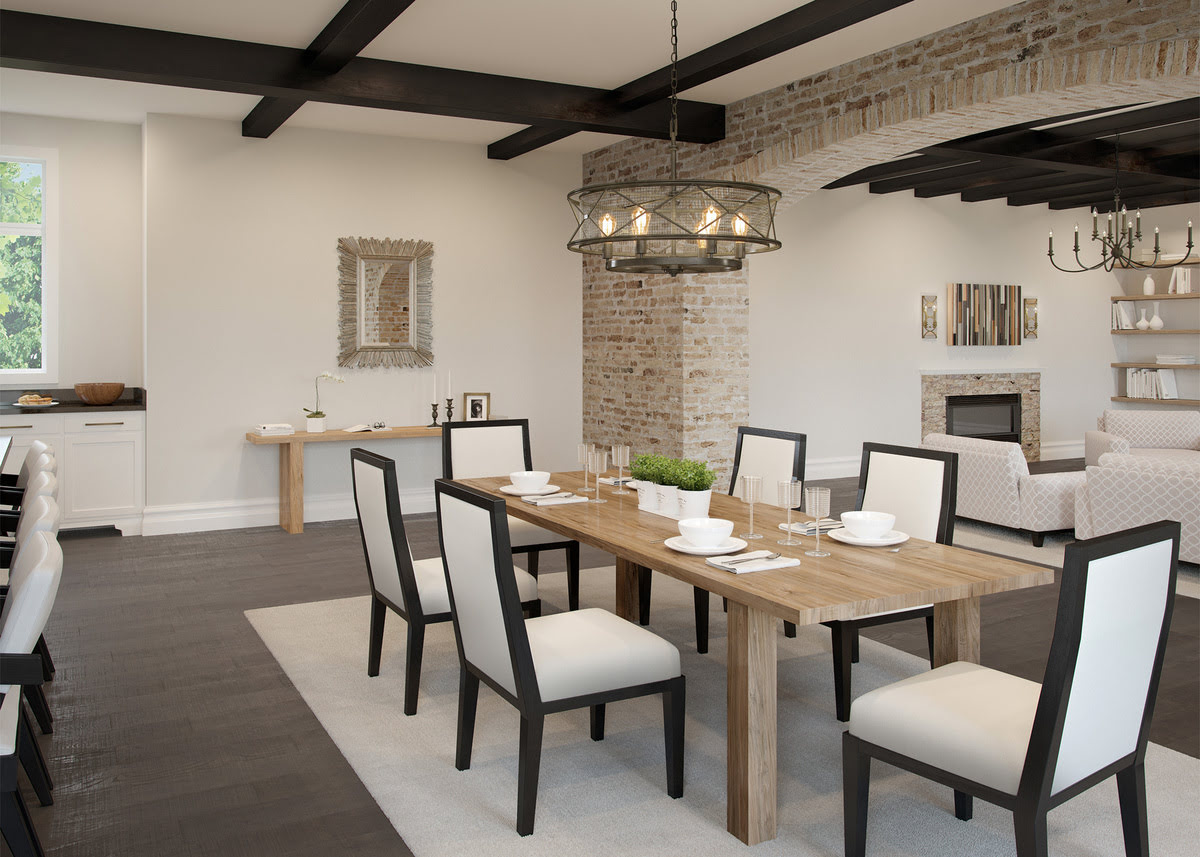
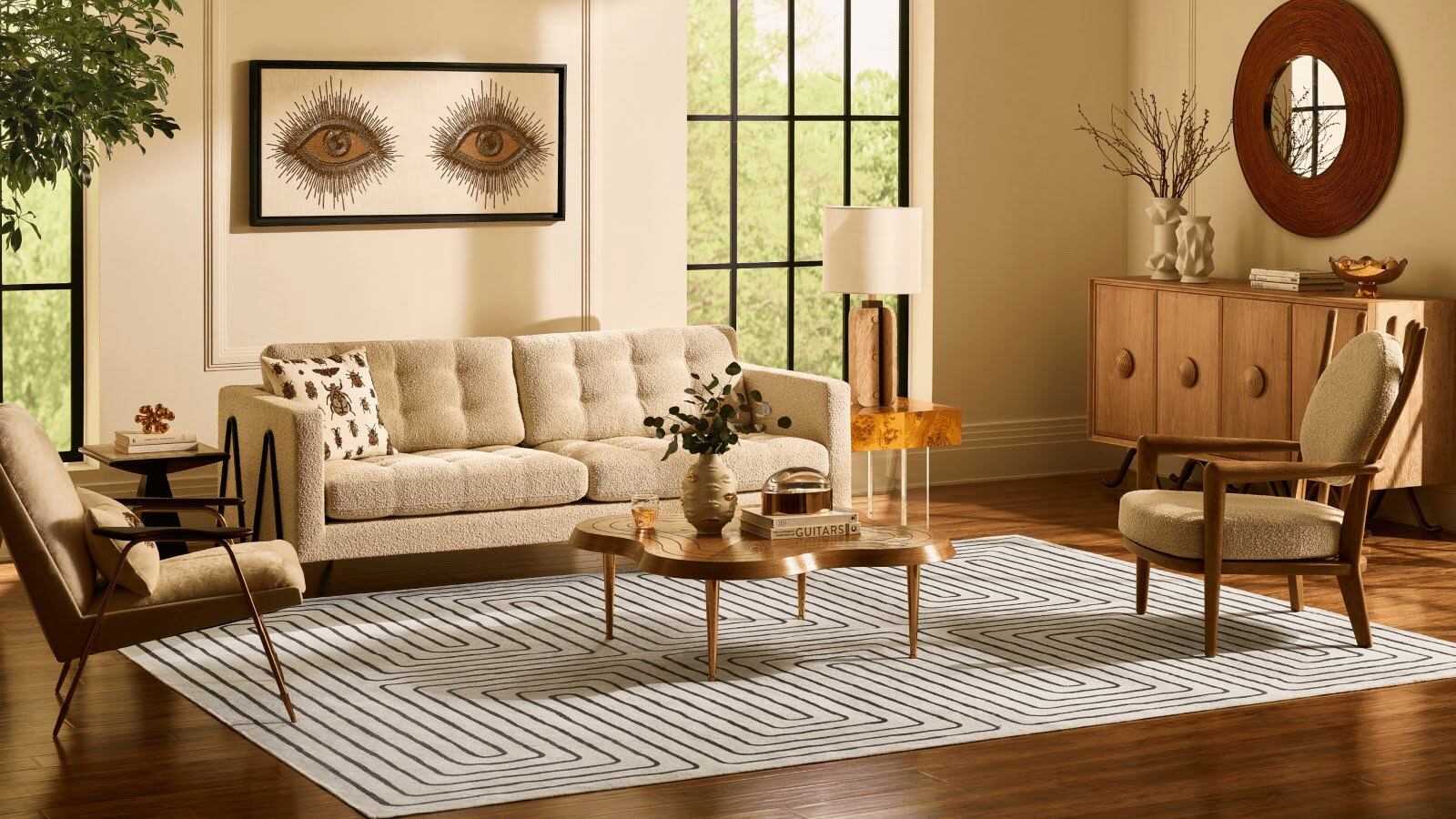
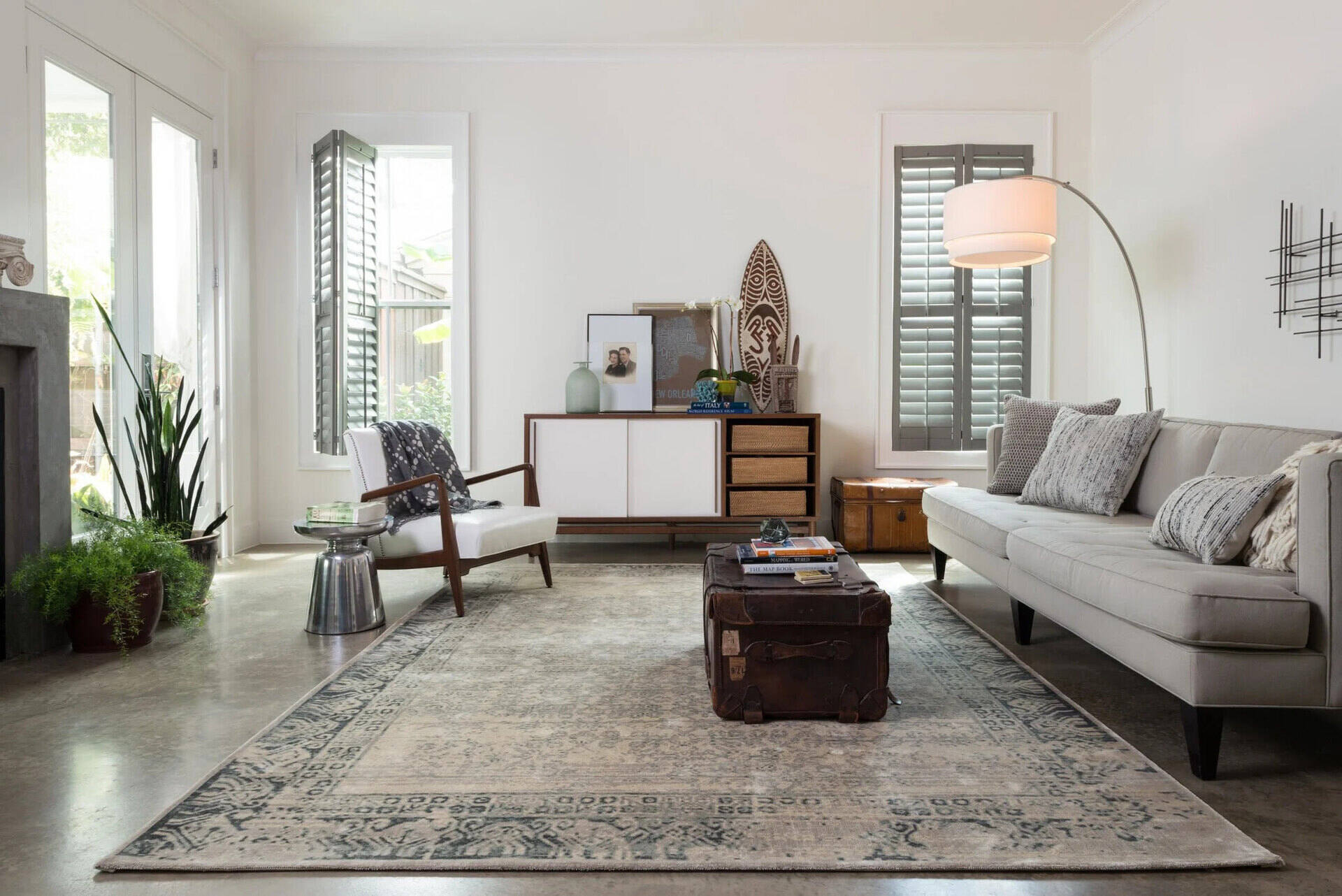
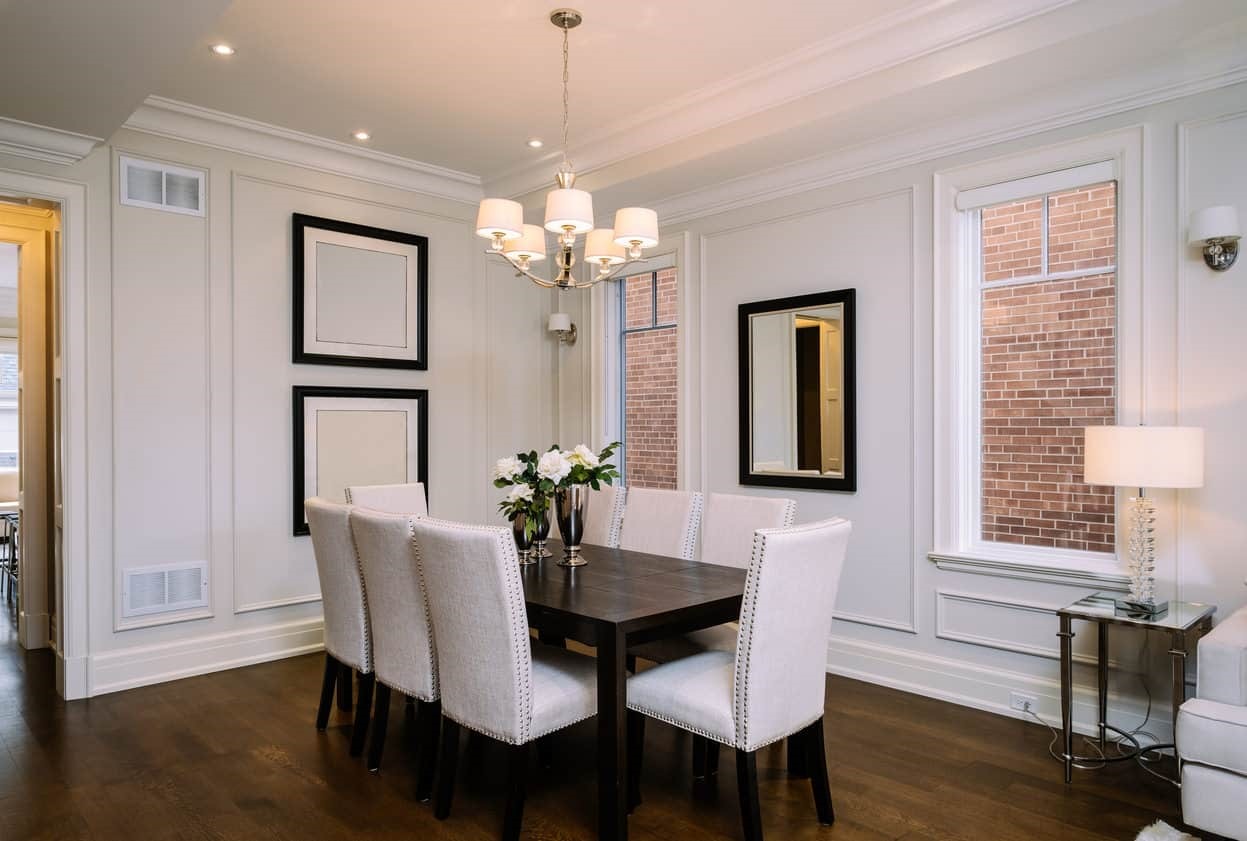
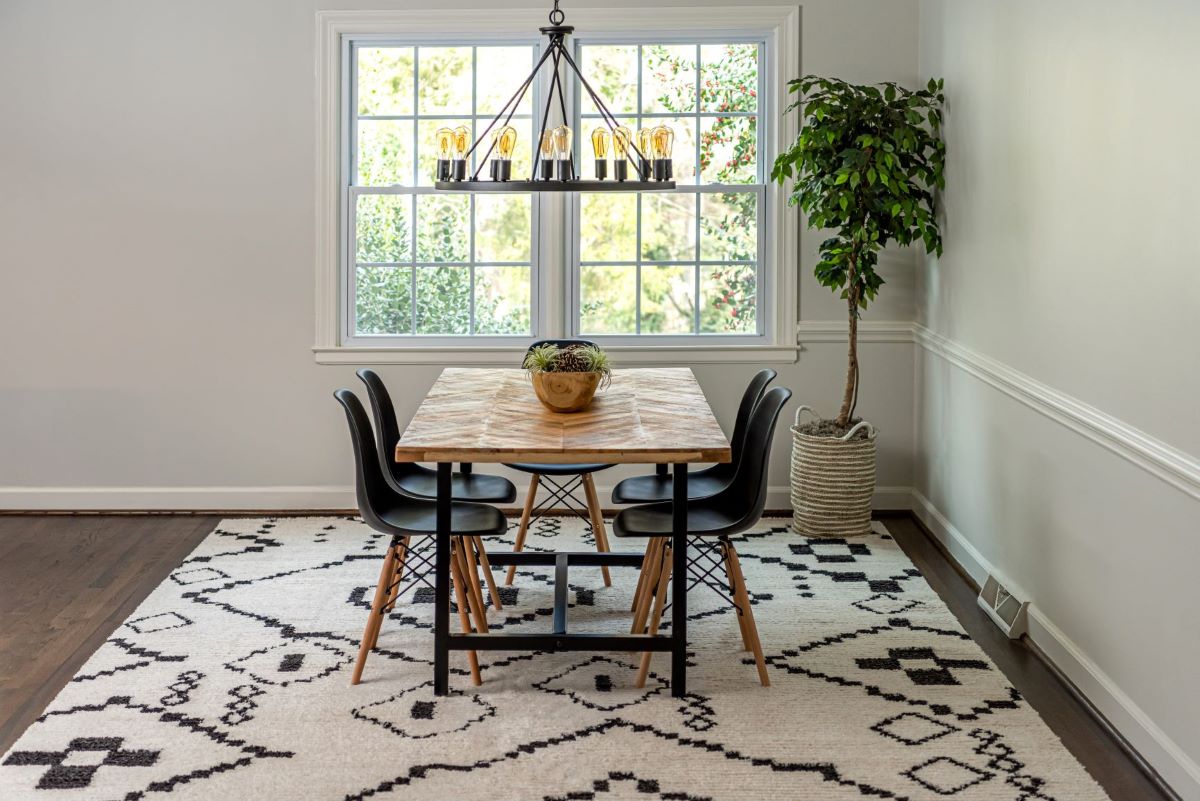
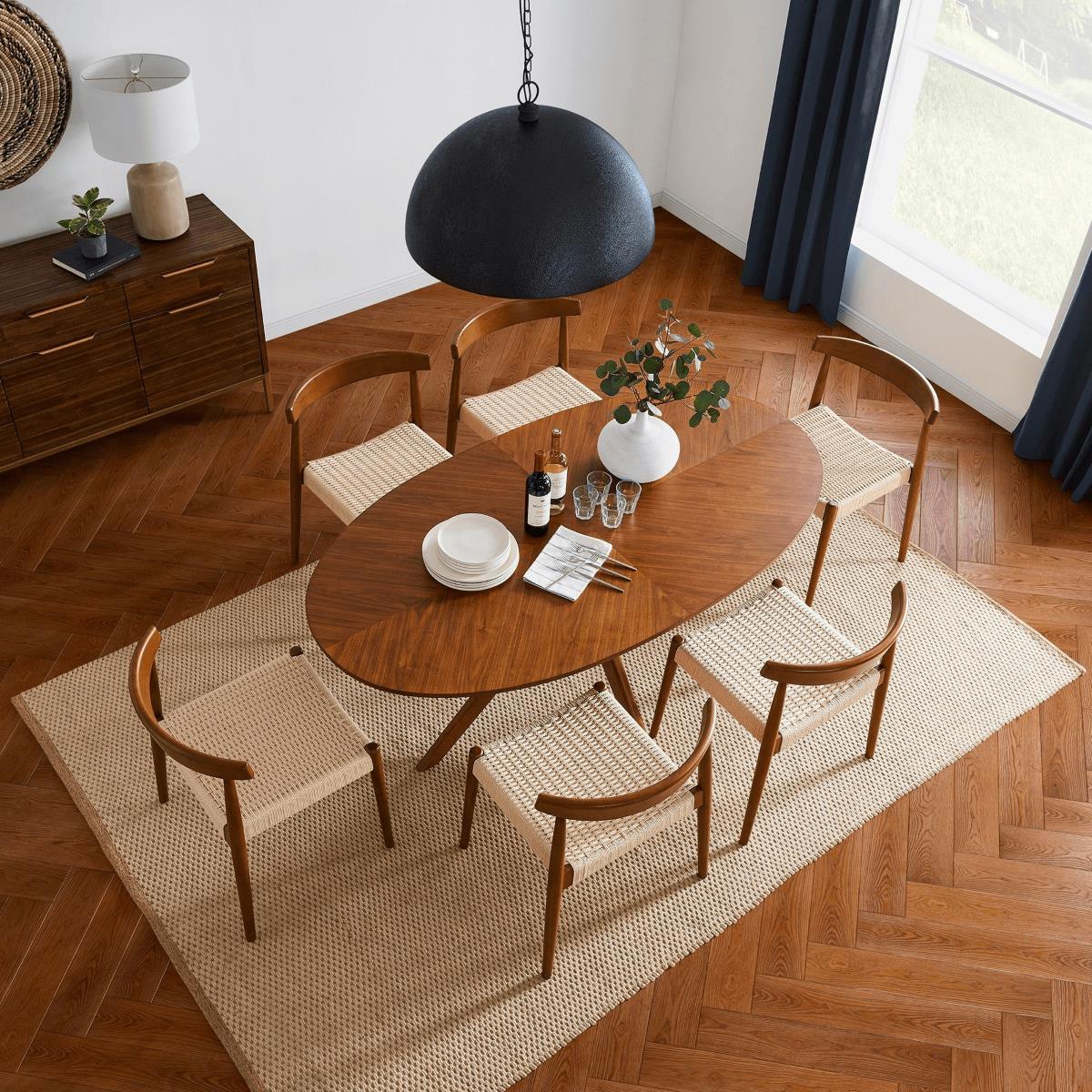
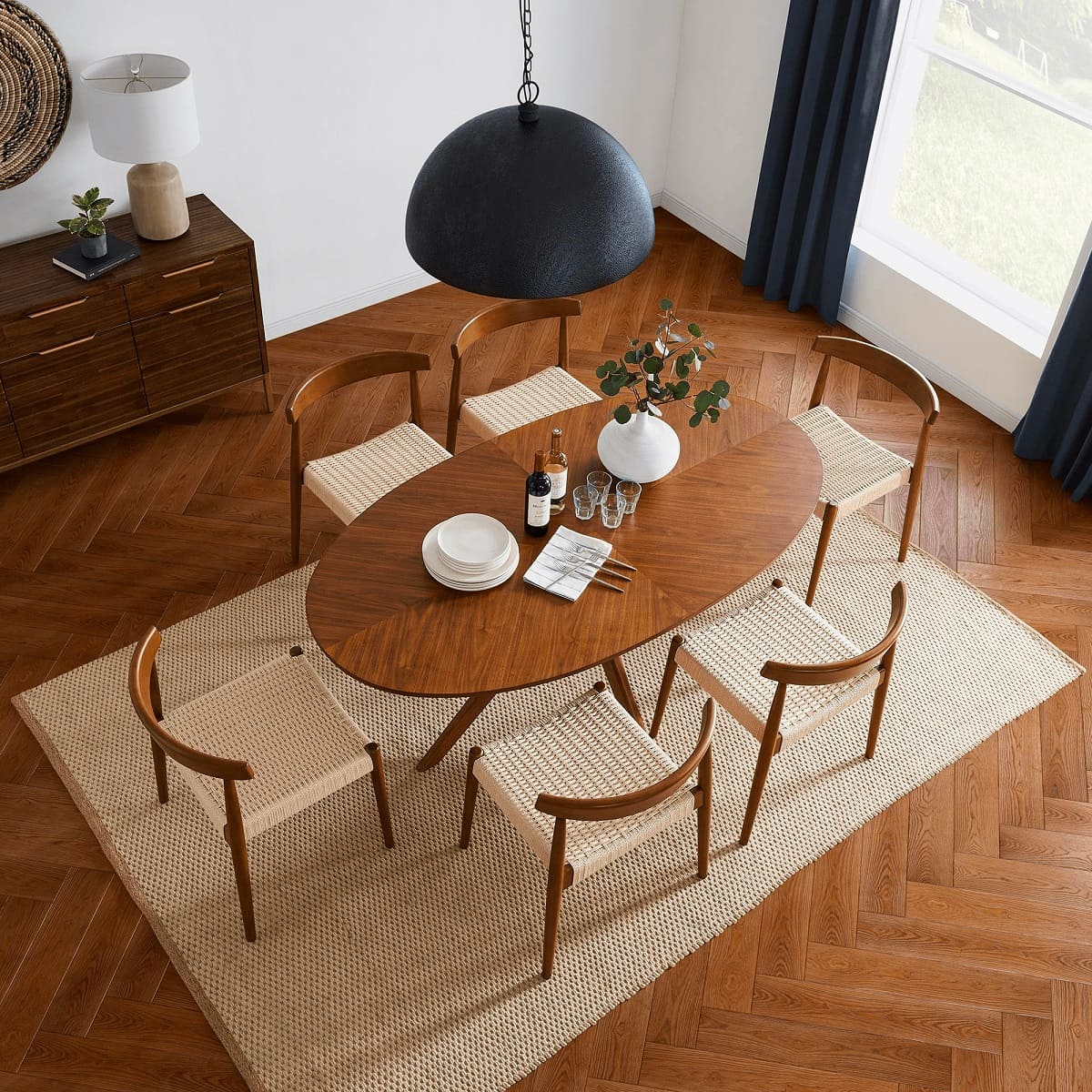
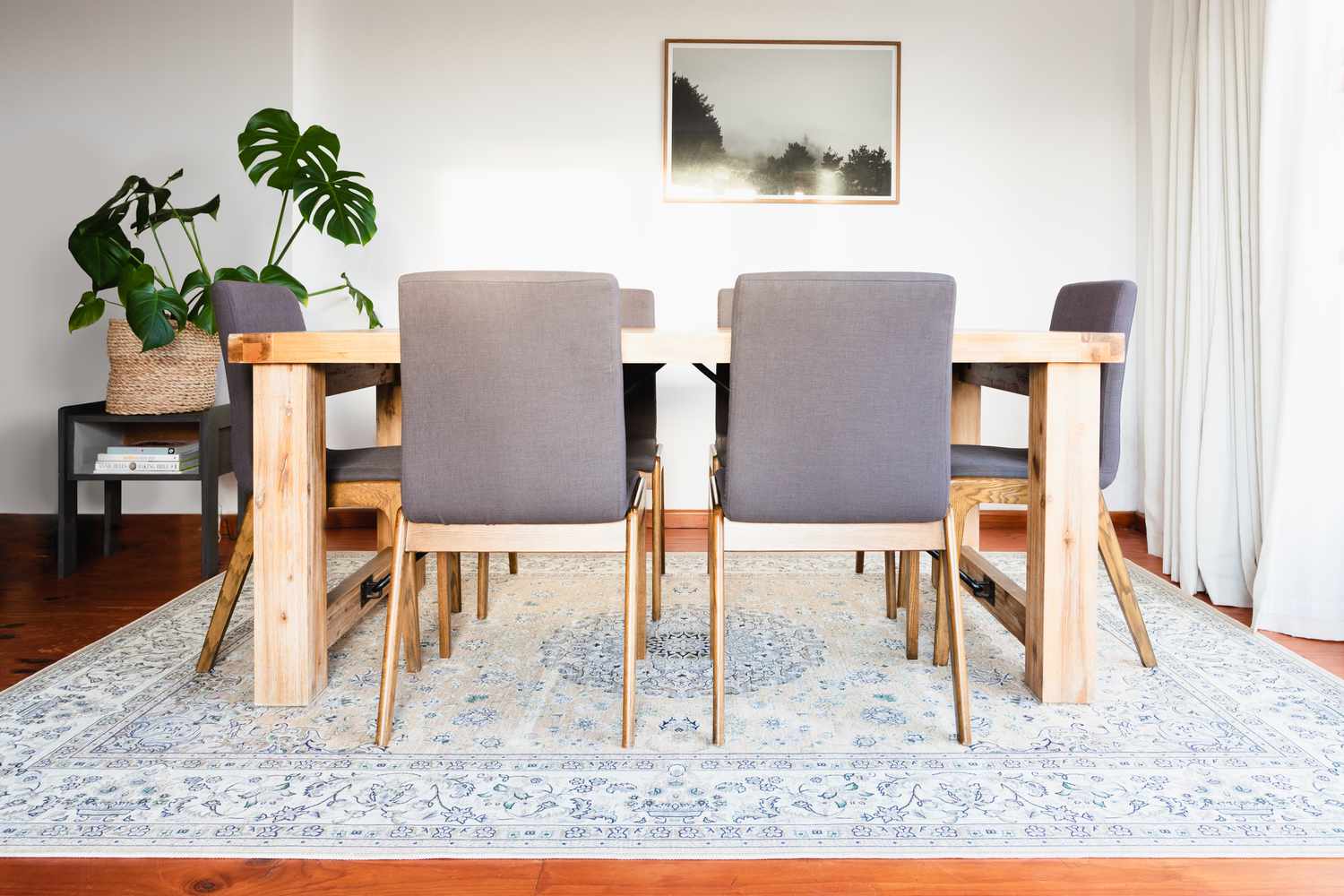


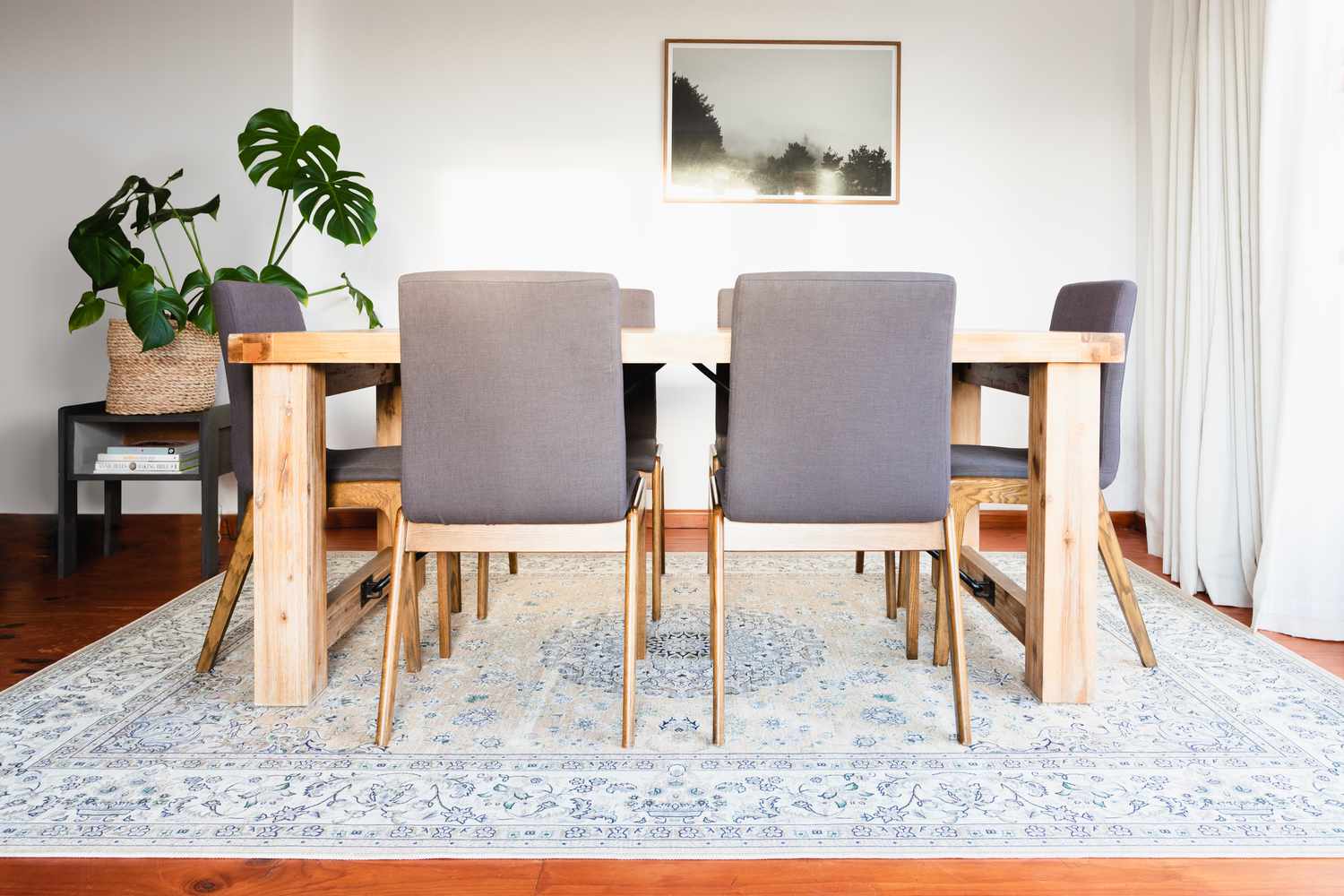



0 thoughts on “What Size Rug To Get For Dining Room?”